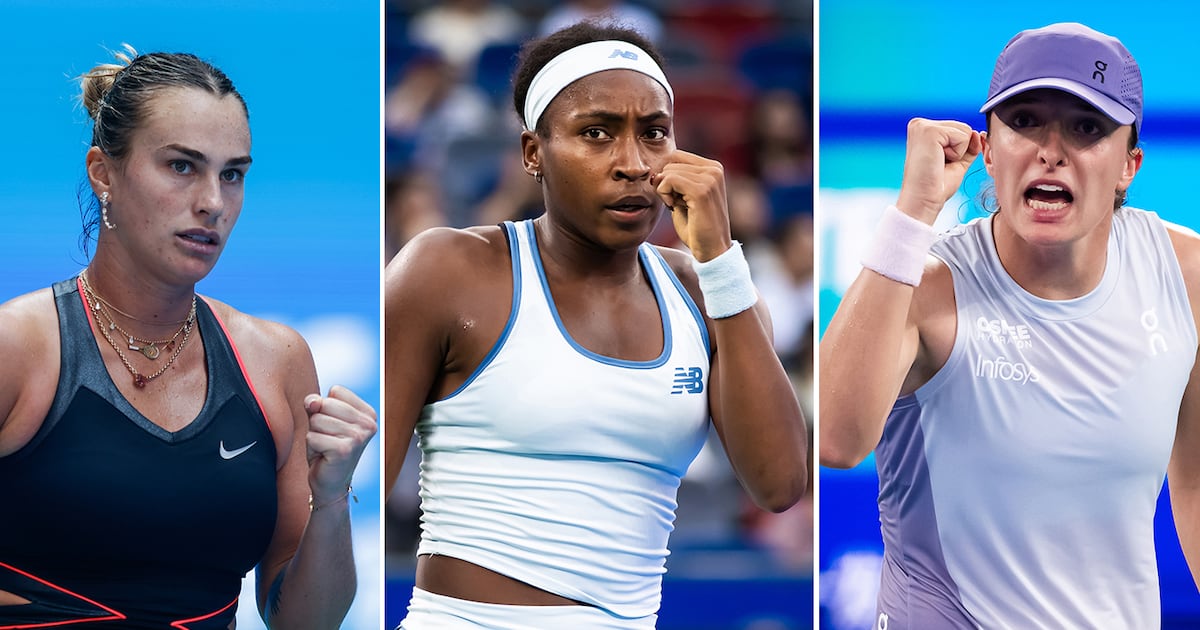The WTA Finals land in Riyadh, and so does the weight of a generation

There’s a certain gravity that comes with the WTA Finals. A sense that we’re not just closing a season, but sealing a chapter in women’s tennis. This year, that gravity feels heavier than usual.
Maybe it’s because the tournament has touched down in Riyadh for the first time, a city pulsing with contrast. It’s where tradition meets transformation, spectacle meets sport.
Or maybe it’s because the eight women who make up this year’s singles field represent the most vivid cross-section of where tennis is. And where it’s headed.
On Monday night, the draw ceremony unfolded under the gleaming lights of the capital, with Garbiñe Muguruza — the 2021 champion turned tournament director — presiding like a monarch passing the torch. Around her stood the new rulers of the women’s game.
Defending champion Coco Gauff, World No. 1 Aryna Sabalenka, and Wimbledon queen Iga Swiatek. Amanda Anisimova, making her debut, looked equal parts nervous and radiant, the way players do before they realize they belong. The symbolism wasn’t lost on anyone.
In a poetic nod to history, this year’s groups were named after two titans. Stefanie Graf and Serena Williams, the benchmark for domination in the sport.
The draw felt almost fated. Sabalenka leading the Graf Group, Swiatek anchoring the Serena Group. As if the tennis gods had decided to honor legacy with legacy.
Sabalenka, who has spent the last 54 weeks perched atop the WTA rankings, arrives in Riyadh with a resume fit for a ruler. Four titles, a U.S. Open defense, and enough firepower to make every match a referendum on raw will.
Yet for all her success, one thing remains missing. The Billie Jean King Trophy. This could finally be her coronation, her moment to check that last box.
Across the aisle stands Swiatek, ever cerebral, ever unflappable. Except, perhaps, when faced with her own expectations. After a wobble in the spring, she reminded the world of her genius by claiming Wimbledon in an almost inhuman display of dominance.
A 6-0, 6-0 dismantling of Anisimova that still echoes. Now she’s back in the mix, seeking a second Finals crown and a quiet statement that consistency can be as commanding as chaos.
But the tournament’s heartbeat belongs to Gauff. A year ago, she became the youngest champion in more than a decade, conquering both Sabalenka and Swiatek on her way to the title.
Twelve months later, she returns not as a prodigy but as an authority. A two-time major winner who’s learned how to carry expectation without letting it carry her.
Her season has been uneven at times, marked by early exits and a mid-year coaching reset, but she’s closing the year with a streak that suggests she’s rediscovered her rhythm. There’s a gleam in her eye that says she’s not done rewriting scripts.
And then there’s Anisimova — the lone debutant, the comeback story no one saw coming. Two years ago, she was flirting with walking away from the sport altogether.
Now she’s back in the top echelon, armed with two WTA 1000 titles and the belief that her place among the elite is permanent. Her inclusion gives the draw a freshness, a reminder that reinvention is part of the tour’s DNA.
Jessica Pegula, the workhorse of the circuit, enters her fourth Finals with the quiet steadiness that’s become her brand. She’s the tour’s conscience. Reliable, industrious, rarely spectacular but almost always present.
Elena Rybakina, the enigma with a forehand built for highlight reels, continues to chase the consistency that could elevate her from contender to champion.
Madison Keys, finally a Grand Slam winner after her Australian triumph, returns to this stage nine years after her debut. And Jasmine Paolini, perhaps the least heralded of the bunch, carries the kind of year that makes you believe in late bloomers.
When the first ball is struck on November 1, the math will take over. Points, head-to-heads, tiebreak scenarios. But right now, before the games begin, what lingers is the sense of convergence.
The No. 1 and No. 2 seeds circling each other yet again, the American resurgence embodied in Gauff, Pegula, Keys, and Anisimova, and the international reach that stretches from Poland to Belarus, Italy to Kazakhstan.






